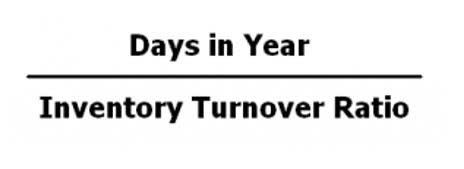+86-(0)768-6925905

The gain is the difference between the proceeds from the sale and the carrying amount shown on the company’s books. Asset, liability, and most owner/stockholder equity accounts are referred to as permanent accounts (or real accounts). Permanent accounts are not closed at the end of the accounting year; their balances are automatically carried forward to the next accounting year. Therefore, always consult with accounting and tax professionals for assistance with your specific normal debit balance examples circumstances.
Understanding the normal balance of accounts

Because of the impact on Equity (it decreases), we assign a Normal Debit Balance. Assets (what a company owns) are on the left side of the Accounting Equation. If an account has a Normal Debit Balance, we’d expect that balance to appear in the Debit (left) side of a column. If an account has a Normal Credit Balance, we’d expect that balance to appear in the Credit (right) side of a column.
- In a T-account, their balances will be on the left side.
- Expenses are the costs a company incurs to generate revenue.
- The debit section highlights how much you owe at closing, with credit covering the amount owed to you.
- In accounting, the normal balance of an account is the preferred type of net balance that it should have.
- Expense accounts normally have debit balances, while income accounts have credit balances.
- If an account has a Normal Debit Balance, we’d expect that balance to appear in the Debit (left) side of a column.
- They refer to entries made in accounts to reflect the transactions of a business.
How Accounts Are Affected by Debits and Credits

Assume he bought the computers with cash and his starting cash account had $25,000 in it. An allowance granted to a customer who had purchased merchandise with a pricing error or other problem https://www.bookstime.com/ not involving the return of goods. If the customer purchased on credit, a sales allowance will involve a debit to Sales Allowances and a credit to Accounts Receivable.
- On the other hand, a business that has not reached profitability will debit a cumulative earnings/loss equity account with its losses, resulting in a negative balance.
- So, you take out a bank loan payable to the tune of $1,000 to buy the furniture.
- Instead, it signifies whether an increase in a particular account is recorded as a debit or a credit.
- Similarly, if the credit total is higher than the debit total, it will have a credit balance.
- Similarly, there is little reason for a business to pay a liability in excess of what it owes.
- For example, you can use a contra asset account to offset the balance of an asset account, and a contra revenue accounts to offset the balance of a revenue account.
- There’s a lot to get to grips with when it comes to debits and credits in accounting.
Contra Accounts
This way, the transactions are organized by the date on which they occurred, providing a clear timeline of the company’s financial activities. Each account can be represented visually by splitting the account into left and right sides as shown. This graphic representation of a general ledger account is https://x.com/BooksTimeInc known as a T-account.

What is the Normal Balance for Owner’s Withdrawals or Dividends?
- Debits and credits tend to come up during the closing periods of a real estate transaction.
- For example, the normal balance of an asset account is a credit balance.
- The left hand side is commonly referred to as debit side and the right hand side is commonly referred to as credit side.
- Thousands of people have transformed the way they plan their business through our ground-breaking financial forecasting software.
- For example net sales is gross sales minus the sales returns, the sales allowances, and the sales discounts.
- In accounting, ‘Normal Balance’ doesn’t refer to a state of equilibrium or a mid-point between extremes.
- As stated earlier, every ledger account has a debit side and a credit side.
The terms “credit balance” and “debit balance” are often used interchangeably. The same goes for when you borrow and when you give up equity stakes. Let’s assume that a friend invests $1,000 into your business. Immediately, you can add $1,000 to your cash account thanks to the investment. At FreshBooks, we help you protect your profits and time with a powerful bookkeeping service.
What are Closing Entries in Accounting? Accounting Student Guide
In a T-account, their balances will be on the right side. When an account has a balance that is opposite the expected normal balance of that account, the account is said to have an abnormal balance. For example, if an asset account which is expected to have a debit balance, shows a credit balance, then this is considered to be an abnormal balance. For reference, the chart below sets out the type, side of the accounting equation (AE), and the normal balance of some typical accounts found within a small business bookkeeping system.
- The Debits and Credits Chart below is a quick reference to show the effects of debits and credits on accounts.
- By contrast, a company in financial trouble will often have more liabilities than assets.
- Here we can understand that after repayment of the installment of the loan, the credit total is higher than the debit total; therefore, the loan a/c gives a credit of Rs. 360,000.
- A credit balance occurs when the credits exceed the debits in an account.
- This account is a non-operating or “other” expense for the cost of borrowed money or other credit.
The rules of debit and credit (also referred to as golden rules of accounting) are the fundamental principles of modern double entry accounting. They guide accountants and bookkeepers in journalizing financial transactions and updating ledger accounts of their business entity. Since the accounting cycle starts with a journal comprising of debit and credit entries, the use of a double entry accounting is not possible without strict adherence to these rules. Asset accounts normally have debit balances, while liabilities and capital normally have credit balances.
